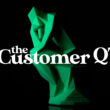When it comes to the customer experience game, it’s always important to remember that the last best experience sets the bar for the next.
On one hand, customers expect brands to know enough about their preferences to provide high-quality interactions, personalized experiences across every touchpoint. At the same time, this expectation exists alongside a wariness to share personal information.
by Michel Diab
We’ve been on an impassioned journey in recent years to reimagine everything about business. From designing entirely new processes, to delivering products and services in brand-new ways; Middle East and African organizations across sectors are leaning into all that technology can offer to help them innovate, operate and thrive in our increasingly digital world.
It’s certainly been inspiring to witness the promise of the digital era continues to come to life across the region. But this rapid digitalization has also catalyzed a unique paradox for brands. On one hand, customers expect brands to know enough about their preferences to provide high-quality interactions, personalized experiences and consistent engagements across every touchpoint. At the same time, this expectation exists alongside a wariness to share personal information out of fear that data will be misused.
While most consumers are receptive to content that is relevant at the right time, striking this balance means delivering connected, privacy-enabled customer experiences that encourage customers to purchase your products, be repeat customers and recommend your brand to others.
To do that, though, it’s key to remember that just as your business has evolved in recent years, so too have your customers. And understanding today’s customer and the role that the customer experience plays in maintaining the modern-day business-customer relationship will be crucial to the success of your business as you plan for the year ahead.
Contextual and personalized customer experiences
In supporting organizations across MEA this year to reimagine their customers experiences, my message has been clear: The one-size-fits-all approach to customer experience is less effective than ever. Whether it’s business-to-business or consumer engagements, customers have adopted the same purchasing behaviors as they have in their personal lives. They tune out when they’re approached with interactions that make them feel like they’re just another number. Rather, they want modern, consumer-like experiences that allow them to engage on their own terms.
To deliver on this expectation, brands need to maximize reach and ROI by going beyond a linear customer journey and aligning experiences across commerce, sales and service. Technology, people, and data siloed within different departments are preventing businesses from working as one. We need to connect the dots and create a holistic continuum of engagement from customer insights to identify intent and action that information with the right buyer at the right time.
That’s where our focus should be for 2023; to leverage the tools available to us to transform the customer experience by streamlining and automating processes to enhance customer interactions. Our goal should be to continuously refine customer experiences at every touchpoint to grow and foster an ongoing relationship with our customers. We need to demonstrate that our businesses hear our customers, we recognize their expectations and we’re responding accordingly.
Using technology to do more with less and improve outcomes
The role of business applications (BizApps) in helping businesses to deliver this experience has grown tremendously in recent years; and as technology companies, we’ve been evolving our BizApp offerings constantly to keep up with the ever-changing needs of our customers (businesses) and their customers (consumers). Through tools like Microsoft’s Customer Experience Platform, we’re helping sales and marketing teams across all sectors to automate time-consuming tasks and address challenges of data entry and reporting errors, vulnerable manual processes and slow approvals.
The recently launched Viva Sales is another great tool that helps sellers gain a complete view of the customer while removing the time spent on manual data entry. It leverages artificial intelligence (AI) to automatically capture Office 365 and Microsoft Teams data into any CRM, while simultaneously delivers AI-driven recommendations and reminders to sellers. It streamlines the seller experience by surfacing insights with the right context within tools salespeople already use.
Customer experience reimagined
When it comes to the customer experience game, it’s always important to remember that the last best experience sets the bar for the next. Doing things the “old way” is no longer an option. Third-party cookies face imminent depreciation, and companies that require a customer to fill out a web form or start with a phone call will rapidly become irrelevant.
Uninformed decisions, missed signals and limited visibility into customer trends will not survive in this era. Rather, organizations operating in our digital-first world need is digitally-powered tools that power customer data unification and understanding, enrich customer data with privacy-friendly insights from multiple sources, and ensure compliance, all while honoring your customer’s consent.
Michel Diab is Director, Business Applications at Microsoft MEA.
This article originally appeared in ITP.net. Photo by 愚木混株 cdd20 on Unsplash













